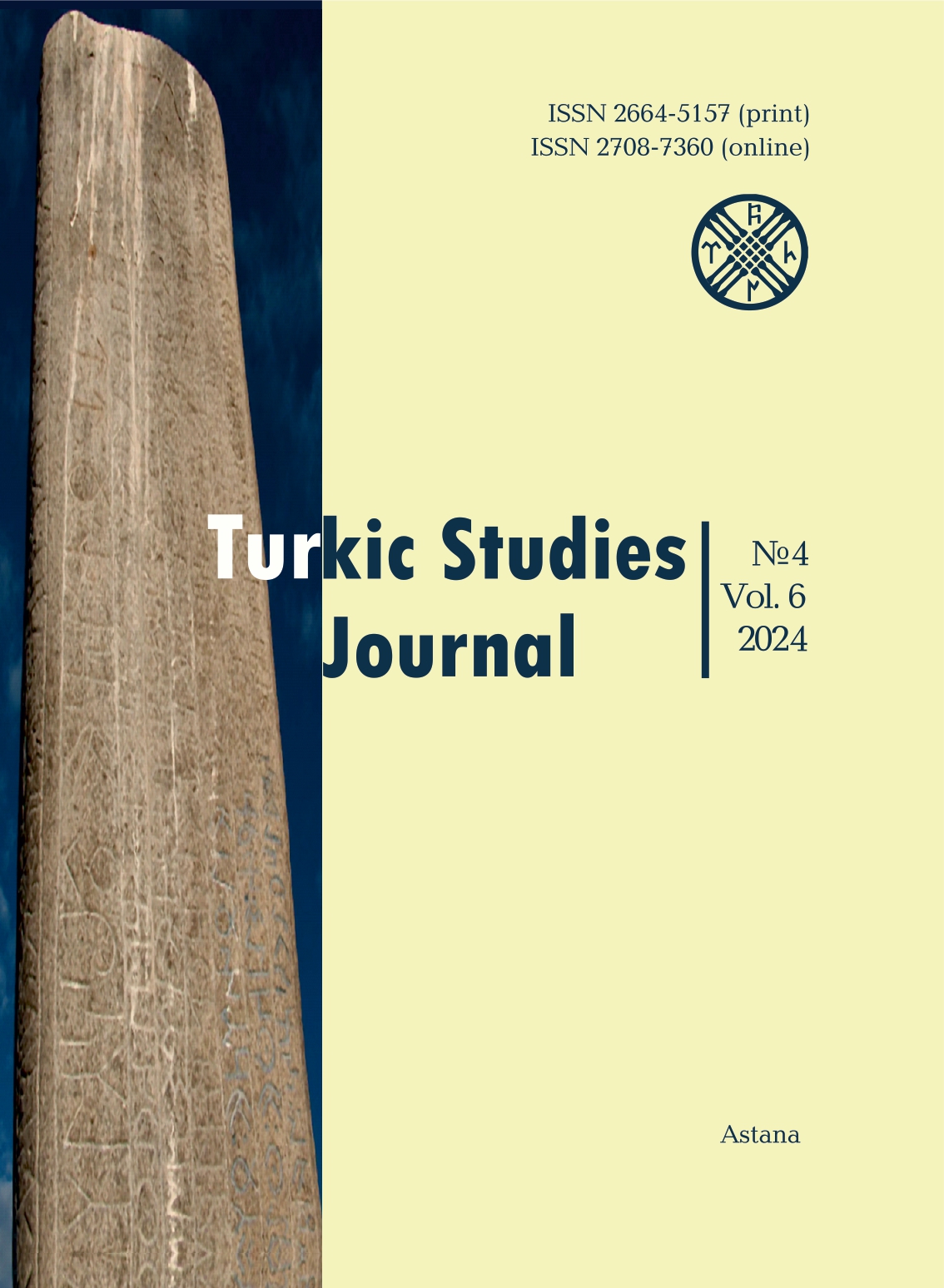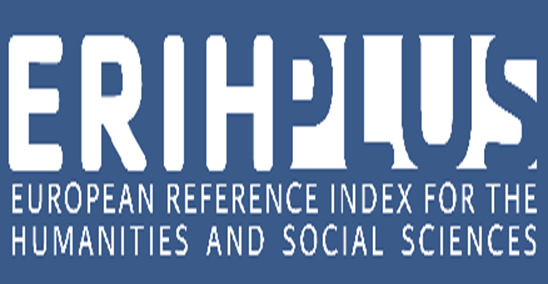The The main aspects of cultural influence between the Turkic Khaganates and the Chinese Empire
Views: 395 / PDF downloads: 425
DOI:
https://doi.org/10.32523/2664-5157-2024-4-36-52Keywords:
the First and the Second Turkic Khaganates, early medieval China, mutual influence of cultures, diplomacy, religion, art, history of the TurksAbstract
The article explores the mutual cultural influence between the First and the Second Turkic Khaganates and the early medieval China. The authors consider the VI-VII centuries AD as an object of chronological research. In the 6th century, the first Turkic Khaganate was established and quickly became an important geopolitical neighbor of the Chinese Empire. The historical development of the Turkic Khaganate was closely linked to the Chinese Empire: it was the closest ally during periods of prosperity and the most significant threat during the Khaganate’s decline. In the 7th century, the Turks lost their statehood for half a century and were
subjugated by the Tang Empire. Despite this, it was at this time that the influence of Turkic culture on Chinese culture increased. The mutual influence of cultures was manifested in the following areas: religion, various traditions, art, music, objects of material culture, architecture, etc. The research makes it possible to better understand the aspects of diplomatic relations between the states, the motives for the development of the foreign policy vector between them.
The article analyzes historical sources and uses archaeological and anthropological materials, and uses methods of systematic complex analysis.
Downloads
Reference
Байтенов Э.М., 2012. Раннесредневековые надписи в Тарбагатае (Восточный Казахстан) // Сборник материалов международного научно-практического семинара «Историко-культурное наследие и современная культура». Алматы, 2012, С. 48-51. [Электронный ресурс] – URL: https://www.arheology.kz/2016-01-24-13-26-14/275-rannesrednevekovye-nadpisi-v-tarbagatae-vostochnyjkazakhstan.html (дата обращения: 20.10.2024).
Бичурин Н. Я., 1950. Собрание сведений о народах, обитавших в Средней Азии в древние времена. T.1. М., Л.: Издательство АН СССР. 379 с.
Ганиев Р.Т., 2017. Древние тюрки и Китай в 553–581 гг.: приемы и методы внешней дипломатии // Вестник Томского государственного университета. №418. С. 78-84.
Гумилев Л.Н., 1967. Древние тюрки. М.: Наука. 504 с.
История Китая с древнейших времен до начала XXI века: в 10 т. Т. III: Троецарствие, Цзинь, Южные и Северные династии, Суй, Тан (220 – 907). 2014. М.: Восточная литература РАН. 991 с.
Кляшторный С.Г., 1964. Древнетюркские рунические памятники как источник по истории Средней Азии. М.: Наука. 214 с.
Кляшторный С.Г., Лившиц В.А., 1971. Согдийская надпись из Бугута. М.: ГРВЛ. С. 121-146.
Кызласов И.Л., 2001. Смена мировоззрения в Южной Сибири в Раннем средневековье (идеи единобожья в енисейских надписях) // Древние цивилизации Евразии. История и культура. М.:Восточная литература. С. 243-270.
Сейдаметов Э.Х., Кадыров Р.Р., 2016. Погребальные обряды тюрков в средневековье // Наука, образование и культура. № 5 (8). С. 14-17.
Серегин Н.Н., 2013. Китайские изделия из памятников раннесредневековых тюрок Центральной Азии // Теория и практика археологических исследований. №1 (7). С. 49-72.
Серегин Н.Н., 2014. Об эволюции социальной системы раннесредневековых тюрок Центральной Азии в период зависимости от Китая// Известия Алтайского государственного университета, vol. 1. no. 4 (84). С. 211-215. DOI: https://doi.org/10.14258/izvasu(2014)4.1-35
Серегин Н.Н., Чен А., 2020. Китайский импорт из памятников тюрок Центральной Азии (VI-XI вв. н.э.): динамика распространения, историко-культурный контекст // Вестник Томского государственного университета. История. №66. С. 181-189.
Шаймердинова Н.Г., 2014. Древнетюркская картина мира в текстах письменных памятников: учеб.пособие. Астана: ЕНУ. 261 с.
Barfield T.J., 1992. The Perilous Frontier. Nomadic Empires and China 221 BC to AD 1757. Cambridge, MA & Oxford, UK: Blackwell Publishers. 248 p.
Liu Mau-Tsai, 1957. Kulturelle Beziehungen Zwischen den Ost-Türken (= T’u-Küe) und China // Central Asiatic Journal. Vol. 3. No. 3. P. 190-205.
Maue D., Ölmez M., de la Vaissière E., Vovin A., 2018. The Khüis Tolgoi inscription // Ideas behind symbols – languages behind scripts: Proceedings of the 60th Meeting of the Permanent International Altaistic Conference (PIAC). Székesfehérvár, August 27- September 1 2017. Szeged: University of Szeged. 162 p. DOI: https://doi.org/10.14232/sua.2018.52.73-89
Öztürk N.P., 2023. Tang Hanedanlığı Dönemi Çin Müziği ve Türk Kavimlerinin Çin Müziğine Etkileri // Bilig. №105. P. 55-78. DOI: https://doi.org/10.12995/bilig.10503
Porció T., 2015. The Turkic peoples of Central Asia and Buddhism // Mongolica Pragensia ’15 Linguistics, Ethnolinguistics, Religion and Culture Volume 8, No. 2. P. 15-42.
Skilling P., 2021. Questioning the Buddha: A Selection of Twenty-Five Sutras. New York: Simon and Schuster. 680 p.
Taşağıl A., 2021. Gök-Türkler I-II-III. Ankara: Türk Tarih Kurumu. 475 p.
Taşağıl A., 2013. Çin Kaynaklarına Göre Eski Türk Boyları. Ankara: Türk Tarih Kurumu. 206 p.


























